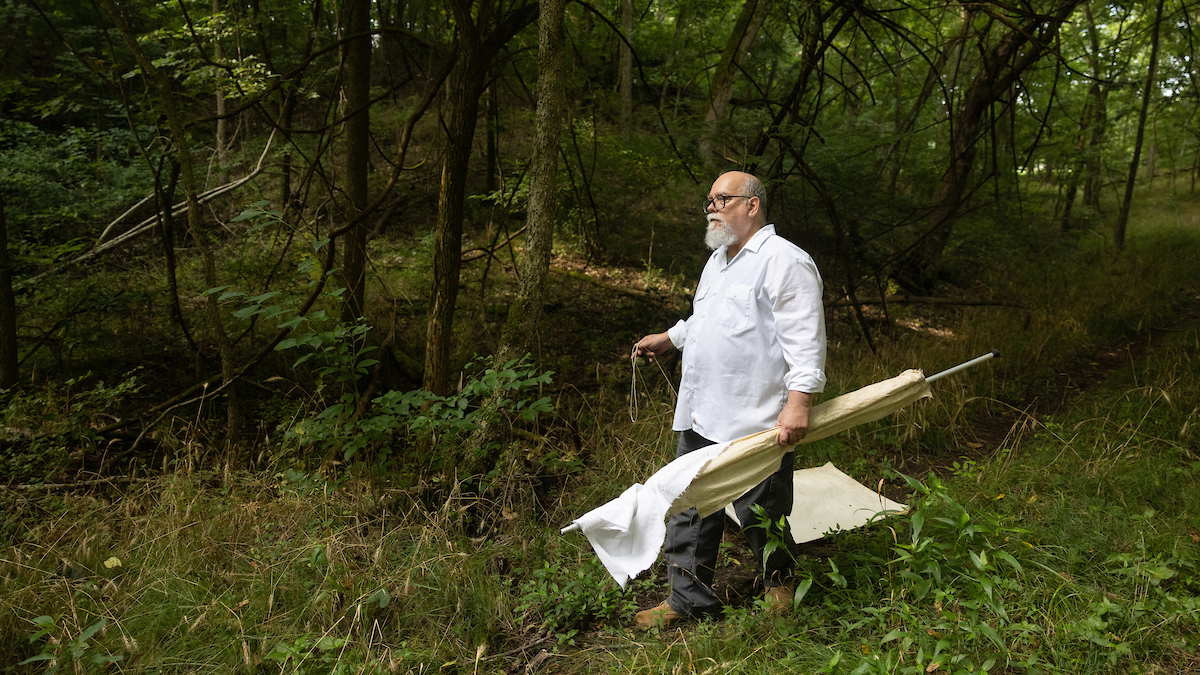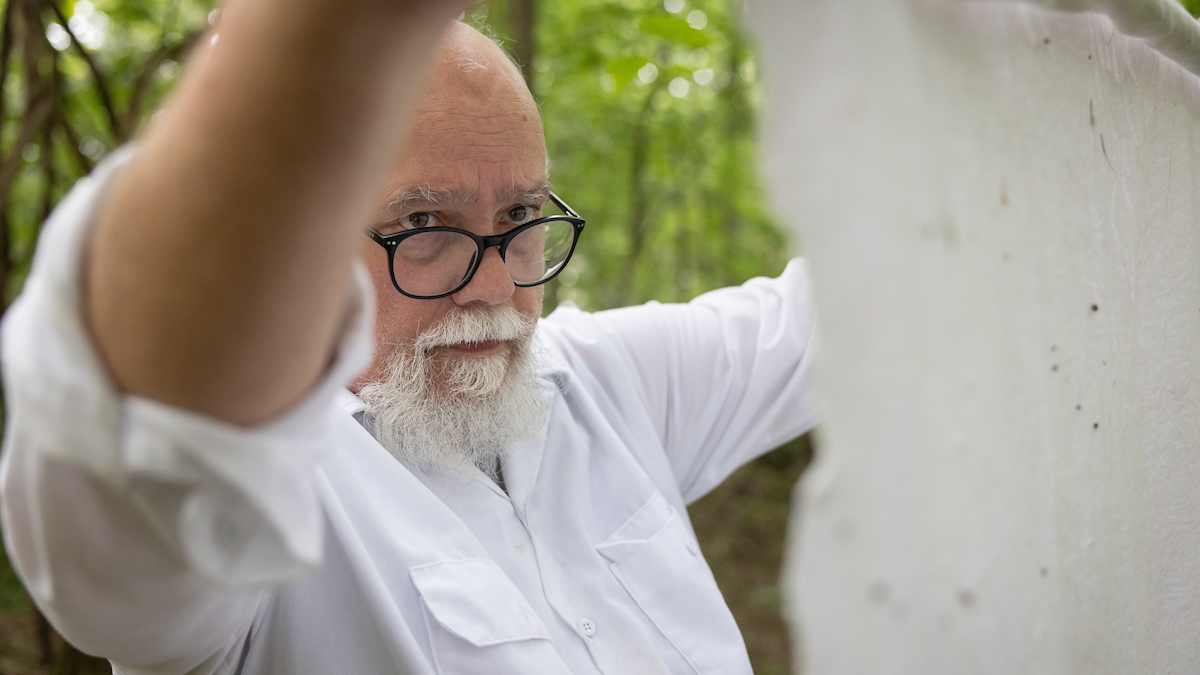Going viral: Surveying the risk of transmitting disease
If you ask Dr. David Claborn, you’ll learn they have more influence than you think.
Disruption of land affects inhabitants’ health
Throughout his career, Claborn, director of the Master of Public Health program at Missouri State University, has studied the public health implications of disrupted environments, which are land or populations damaged by disasters. They create unstable living conditions.
“Instability quickly disrupts infrastructure, leading to either disease or some other kind of disruption to public health.”
A disrupted environment can include land damaged by natural disasters, like earthquakes and hurricanes. Or by human hands, like war and terrorism. But these visible disasters aren’t the only factors that lead to instability.
“An invasive species — like a weed, insect or disease agent — can also seriously disrupt an environment,” Claborn said. “That’s where my research comes in.”

To get a full picture of what species exist in Missouri, Dr. David Claborn has traveled all over collecting data.
Insects and infections
Claborn’s first research interest is entomology — the study of insects. This work crossed over into public health territory when he was commissioned in the U.S. Navy in 1988 as a medical entomologist. During his various deployments, Claborn was exposed to many areas changed by invasive insect species.
The Zika virus, carried by various species of mosquitoes, is a recent example of invasive insects affecting public health.
The problem: No one knew what kind of mosquitoes were buzzing around Missouri.
So, from 2016-19, Claborn led a team across Missouri collecting mosquito species. The Department of Health and Senior Services (DHSS) funded the research to calculate the risk of Zika in Missouri.
Since specific species are more likely to carry the virus, the DHSS needed a wide-scale count of the mosquitoes populating the state.

The Woodlands, which was acquired by the Darr College of Agriculture in 2013, has grown wild – making it a perfect location for research.
Research in the junkyard
Over four summers, Claborn and groups of students collected, identified and curated over 50,000 mosquitoes. They stomped through wreckage yards and old tire piles to extract samples.
Those locations may seem odd, but stagnant water and swampy conditions show up in the places you don’t expect. Mosquitoes love tire piles.
“Some mosquitoes are well-adapted to artificial containers because they’re well-adapted to living with humans,” Claborn said. “A wreckage yard is perfect breeding ground.”
The team lured mosquitoes with dry ice, then took them back to the lab to identify. The process had to be quick for the volume of mosquitoes and the scope of the state.
They ended up finding no specimens of the Yellow Fever mosquito, which is the main transmitter of Zika. Yellow Fever mosquitoes used to be abundant in Missouri. However, they did find two other invasive species that may have influence in the state.
“No one had looked at the mosquito fauna in Missouri for about 75 years.”
The first species, which Claborn believes displaced the Yellow Fever mosquito in Missouri, is the Asian Tiger mosquito. It also can carry Zika.
“This species is common, and it’s everywhere,” he said.
The second species is the Asian Bush mosquito.
“Both of these species became abundant in Missouri just over the last 20 years,” Claborn said. “These new species change our risk profile for the transmission of Zika and other viral diseases.”
The DHSS used Claborn’s data to form contingency plans. With his help, the state is prepared for a potential Zika, or other mosquito-borne virus, outbreak.

In addition to Dr. David Claborn’s work with mosquitoes, he is also studying tick populations.
Speaking of viral diseases
In spring 2020, Claborn’s work was disrupted by a new public health emergency: the COVID-19 global pandemic.
Claborn was on the MSU COVID-19 crisis management core executive team, which activated March 2, 2020. Using his experience in public health, he helped lead the asymptomatic saliva testing on campus.
Claborn wrote the testing questionnaire, collecting demographics such as living situations, age, race and other variables. The testing team compared positive tests with the demographic data, looking for patterns affecting disease transmission.
The pandemic highlights Claborn’s earlier point: Environments are disrupted in many ways. Educated, flexible public health experts are always on guard for the next health emergency.
“Four years ago, the main concern was Zika, but the nature of public health is that the main health concern can flip on its head very quickly,” Claborn said. “You have to be prepared to go do what needs to be done.”
- Story by Lauren Stockam
- Photos by Jesse Scheve
- Video by Chris Nagle and Megan Swift

